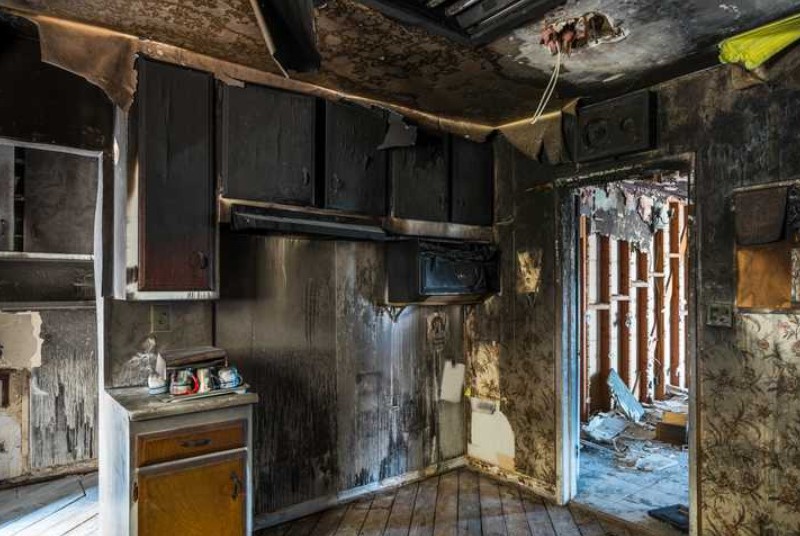
Structural restoration
The structural restoration phase of the water and fire restoration North Fort Worth process includes the following:
- Repairing damaged parts of the building.
- Making the home safe for entry.
- Restoring the building to its original state.
This process also involves the removal of smoke and soot residue. This step is crucial, as smoke and soot leave a residue that can be permanently damaging. IICRC-certified specialists are equipped to handle smoke and soot cleanup and restoration. Using powerful air-purifying equipment, these professionals use various techniques to rid a building of smoke and soot.
Fire and water damage can also cause holes in a building’s structure, giving opportunistic thieves and pesky animals access. To address this issue, fire cleanup experts will use techniques such as board-up and tarping to cover massive openings in a building. While clean water from fires poses no health threat to humans, graywater can contain chemicals and biological contamination, making a structure unhealthy for humans.
Cleaning
One of the most critical parts of fire and water restoration is cleaning. Cleaning up fire damage is essential to restoring the structure and appearance of your home. Fire damage is a serious matter that requires extensive repair. In addition to the apparent damages caused by the fire, it also causes damage to the interior of your home.
The cleaning process can include removing smoke odor and soot stains from walls and floors. Fire restoration technicians also use special equipment to clean up smoke odors from furnishings and appliances. After cleaning, fire restoration professionals may also repair and paint the walls and furniture. They also clean carpets and other affected areas.
Drying
Drying involves measuring the amount of water absorbed by a material. This assessment is essential to determining the drying time and overall damage extent. Certain materials may require special drying techniques. In these cases, a technician may use additional equipment to speed up the drying process. Additionally, this method can help salvage materials. The time and cost of drying will vary based on the situation.
Drying is one of the first steps in fire and water restoration. The drying process begins with the removal of standing water. Then, dehumidifiers will help remove water vapor from the air. Dehumidifiers are available in large and portable models and can be very effective in small rooms. Sump pumps can also help remove standing water and can be rented or purchased. A permanent sump pump will be more efficient than a temporary one. Shop vacs can also help remove excess water from a home. Although these tools are unsuitable for dry cleaning, they can dry up a house after a fire.
Dehumidification
Dehumidification is the process of drying out a building that has experienced fire or water damage. The process involves using special equipment, such as moisture meters, to measure the moisture content of a building. After the moisture level is measured, a customized dehumidification plan is developed. This process will utilize industrial dehumidifiers, fans, and negative air machines to remove excess moisture from a building.
Conventional refrigerant dehumidifiers are unsuitable for significant water losses, as they cannot dry out bound water trapped in structural materials. However, low-grain refrigerants have proved to be a workhorse in the water damage restoration industry. These dehumidifiers produce lower vapor pressures, so they are better for high-humidity environments.
Mold removal
One of the steps in the water and fire restoration North Fort Worth process is mold removal. A professional mold removal specialist will use specialized equipment to contain the problem area and clean it thoroughly. They will also shut off any windows or doors to prevent the further spread of mold. Once the mold is removed, a trained eye will inspect the area for any remaining damage.
Before hiring a mold removal service, check their credentials and references. Ask the contractor to follow the EPA’s Guide to Mold Remediation Guidelines in Schools and Commercial Buildings. If they cannot, check out ACGIH and other professional organizations’ policies.
Sanitization
A vital part of the water and fire restoration North Fort Worth process is sanitization, which reduces the presence of bacteria and viruses on surfaces. Typical sanitization products include wipes and sprays. The type of sanitizer used varies depending on the area that needs to be treated.
Aside from the initial cleanup process, sanitization also involves addressing the damage that the sewage may have caused. It also helps restore the property to a healthy state by preventing infection and disease.
Cleaning up after a fire
One of the first steps in the fire and water restoration process is cleaning up. Once the fire is out, it’s essential to wipe down all surfaces to reduce the risk of mold growth. Getting rid of standing water and securing your property so it can’t be stolen is also necessary.
Cleaning up after a fire involves a lot of hard work, and you should be patient. The cleaning process will take much longer than you anticipate. However, keeping a positive attitude and avoiding unnecessary worries will help you get through it faster.








